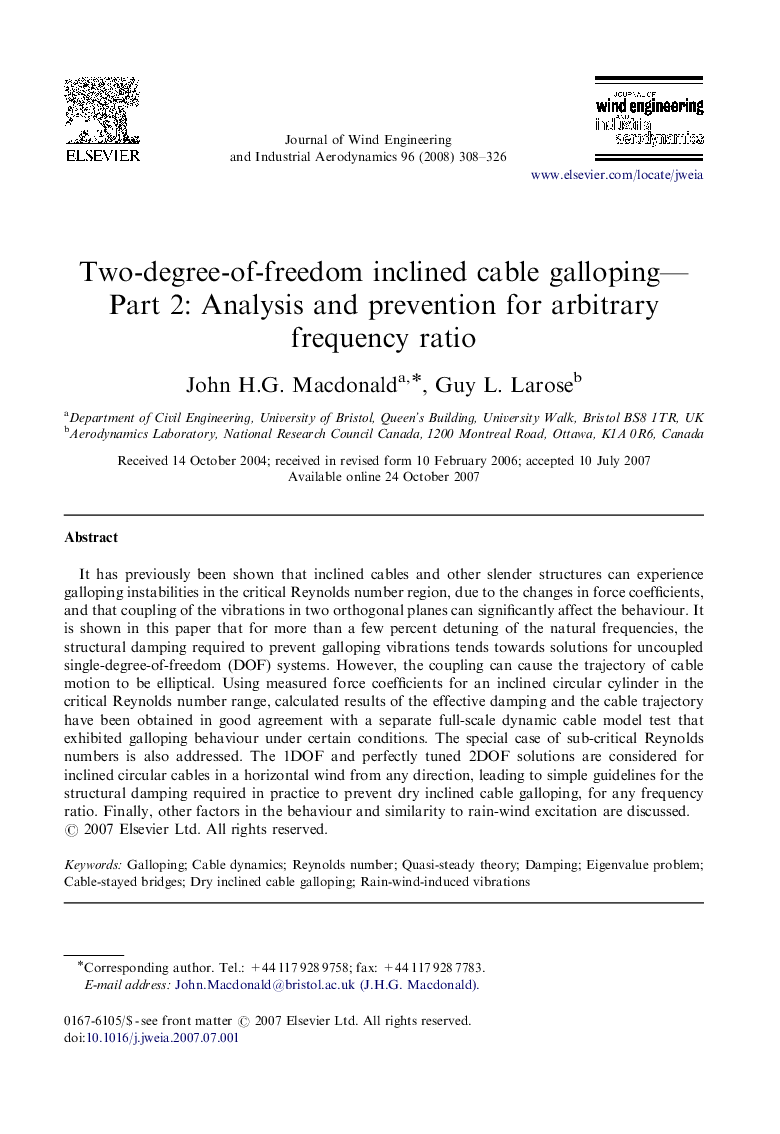| Article ID | Journal | Published Year | Pages | File Type |
|---|---|---|---|---|
| 293336 | Journal of Wind Engineering and Industrial Aerodynamics | 2008 | 19 Pages |
It has previously been shown that inclined cables and other slender structures can experience galloping instabilities in the critical Reynolds number region, due to the changes in force coefficients, and that coupling of the vibrations in two orthogonal planes can significantly affect the behaviour. It is shown in this paper that for more than a few percent detuning of the natural frequencies, the structural damping required to prevent galloping vibrations tends towards solutions for uncoupled single-degree-of-freedom (DOF) systems. However, the coupling can cause the trajectory of cable motion to be elliptical. Using measured force coefficients for an inclined circular cylinder in the critical Reynolds number range, calculated results of the effective damping and the cable trajectory have been obtained in good agreement with a separate full-scale dynamic cable model test that exhibited galloping behaviour under certain conditions. The special case of sub-critical Reynolds numbers is also addressed. The 1DOF and perfectly tuned 2DOF solutions are considered for inclined circular cables in a horizontal wind from any direction, leading to simple guidelines for the structural damping required in practice to prevent dry inclined cable galloping, for any frequency ratio. Finally, other factors in the behaviour and similarity to rain-wind excitation are discussed.
